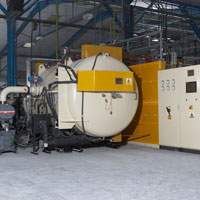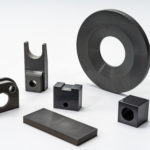The last 16 months has seen International Syalons turnover reach record levels. This has been due to demand from existing customers and the development of new and exciting business opportunities in a range of markets such as wear, molten metal handling, chemical and process and aerospace. In order to meet this increased demand ISN has invested in additional personnel and equipment. Last year we increased our staff by around 20% and so far this year we have recruited an additional 20% with more to come.
There has already been a substantial investment in critical equipment with recent purchases including a large capacity sintering furnace and iso-static press. Significantly within the past 3 months we have installed a new 4 axis CNC turning centre, a specialised centreless grinder and a laser particle size analyser. We are increasing capacity in our machine shops with additional machines. This investment in equipment and personnel will ensure we are prepared for the challenges ahead.


 nternational Syalons (Newcastle) Limited have recently installed and commissioned a new, large, state of the art sintering furnace, which significantly extends our sintering capacity.
nternational Syalons (Newcastle) Limited have recently installed and commissioned a new, large, state of the art sintering furnace, which significantly extends our sintering capacity.